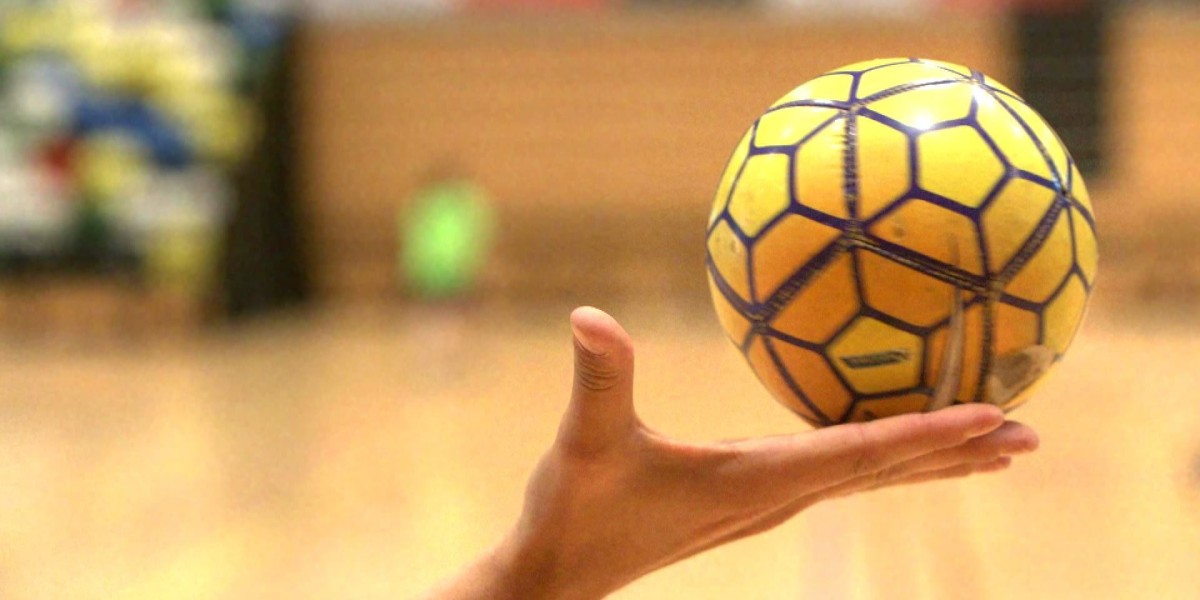Handball, a dynamic and fast-paced team sport, may not be as globally recognized as football or basketball, but it has a dedicated and passionate following, particularly in Europe, Asia, and parts of Africa. Combining the agility of basketball with the speed of soccer, handball offers an exciting spectacle for players and fans alike. This article explores the basics of handball, its history, the rules, and the growing appeal of the sport worldwide.
The Basics of Handball
Handball is played on a rectangular court by two teams, each consisting of seven players: six field players and one goalkeeper. The objective is simple—to score more goals than the opposing team by throwing a ball into the opponent’s goal. Players use their hands to pass, dribble, and shoot the ball, while the goalkeeper's job is to block these shots and keep the ball from entering the net.
A standard handball court measures 40 meters long by 20 meters wide, with goals placed at each end. The game is typically played in two 30-minute halves, with a 10-15 minute break in between. In the case of a tied score at the end of regulation time, extra time and penalty shootouts may be used to determine the winner.
What sets handball apart from other team sports is its fast tempo and constant motion. Players continuously run, pivot, and pass, with little downtime. The court is divided into different zones, including a 6-meter area around the goal, where only the goalkeeper is allowed. Field players are not allowed to enter this area when shooting, though they can jump and shoot while airborne.
The History of Handball
The origins of handball trace back to ancient civilizations. Various forms of a ball game resembling modern handball were played in ancient Greece and Rome. However, it was not until the late 19th century that handball began to take its modern form in Europe.
The first organized version of the sport was developed in Denmark and Germany in the early 1900s. Initially, handball was played outdoors on a larger field, similar to soccer. The sport evolved into its indoor form in the 1920s, which helped it gain popularity in countries with colder climates.
Handball made its debut at the 1936 Summer Olympics in Berlin as an outdoor sport but was later removed from the Olympic program. It wasn’t until 1972, in Munich, that handball returned to the Olympics as an indoor sport. Since then, it has grown exponentially in popularity, particularly in European countries like Germany, France, and Sweden, which have become handball powerhouses.
The Rules of Handball
While the basic goal of handball is simple—score more goals than the opponent—several key rules govern the game to maintain order and fairness.
Duration and Structure: As mentioned, a standard game consists of two 30-minute halves. Teams are allowed one timeout per half, and a halftime break typically lasts 10-15 minutes.
Dribbling and Passing: Players are allowed to dribble the ball like in basketball, but they can only take three steps without dribbling or passing. This rule keeps the game fast-paced and prevents stalling. The ball can be passed to teammates or shot at the goal.
Goalkeeper and Defending: The goalkeeper plays a crucial role, protecting the goal from shots. Defenders try to block attacking players and intercept passes. However, defenders are not allowed to use excessive force or hold the attacking player.
The 6-Meter Line: A key feature of handball is the 6-meter line around the goal. Only the goalkeeper is allowed within this area. Players can jump into the area to attempt a shot, but they must release the ball before landing inside the zone.
Fouls and Penalties: Like most team sports, handball has a system for dealing with fouls. Minor fouls may result in a free throw, while more serious infractions, like holding or hitting an opponent, can lead to a 2-minute suspension or even a penalty throw. A penalty throw is taken from the 7-meter line, with only the goalkeeper defending.
The Appeal of Handball
Handball's appeal lies in its combination of athleticism, strategy, and excitement. The sport requires a blend of physical endurance, quick thinking, and team coordination. Players must constantly be aware of their surroundings, anticipating passes and positioning themselves for shots or defensive blocks. At the same time, it is a high-speed sport, with continuous action that makes it thrilling to watch.
One of handball's greatest attractions is its inclusivity and accessibility. The game can be played at various skill levels, from amateur to professional, and requires minimal equipment—just a ball, a court, and a goal. As a result, it is widely played in schools, recreational leagues, and youth clubs across the world.
Handball in International Competitions
Handball enjoys immense popularity in Europe, where the sport has a well-established professional league system. Countries like Denmark, France, Spain, and Germany regularly field strong national teams, and handball clubs often have fervent fan bases.
The FIFA World Handball Championship, held every two years, is one of the sport’s most prestigious tournaments. The competition features the best national teams from around the world, with Europe often dominating the podium. Similarly, the European Handball Championship is a major event that highlights the continent’s top teams.
Handball also enjoys success at the Olympic Games and the World Cup. Countries like France, Denmark, and Sweden are frequent medal contenders, while nations like Qatar, Tunisia, and Egypt are rising stars in the international handball scene.
Women's Handball: Growth and Impact
While men's handball has historically been the more dominant side of the sport, women’s handball has seen tremendous growth in recent years. The Women's Handball World Championship and Olympic Games have gained in stature, with women’s teams from countries like Norway, Russia, and France leading the way.
The popularity of women’s handball is reflected in the increased visibility of female athletes and growing sponsorship opportunities for women’s teams. This shift has contributed to greater recognition and a larger fan base for the women’s game.
The Future of Handball
Handball is a sport that continues to evolve. In terms of global reach, it is expanding into new regions, with countries in Asia and Africa beginning to invest in the sport. More nations are developing handball leagues and building grassroots programs, which bodes well for the future of the sport.
As the sport continues to grow, handball faces challenges like increasing visibility in non-European countries and expanding its fan base in regions where it is not yet well-known. Nonetheless, the passion and energy surrounding the sport, combined with its accessibility and thrilling pace, suggest that handball will continue to thrive on the global stage.
Conclusion
Handball is a sport that combines speed, strength, strategy, and excitement, making it a thrilling experience for both players and fans. Its rich history, simple rules, and global appeal ensure that it remains one of the most exciting sports in the world. Whether on the court or in the stands, handball has a unique ability to captivate, unite, and inspire, making it the “fastest game on two feet.” As the sport grows, its future looks incredibly bright, and more people around the world are sure to fall in love with the game.








